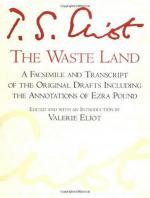|
This section contains 267 words (approx. 1 page at 400 words per page) |

|
The most important aspect of the work, and the one that informs all others, is the literary movement to which it belongs, modernism, which this work helped define. Modernism is the broad term used to describe post—World War I literature that employs techniques Eliot uses in The Waste Land. These techniques, and all the techniques associated with modernist literature, expressed a rebellion against traditional literature, which was noted by its distinct forms and rules. For example, in traditional poetry, poets often sought uniformity in stanza length and meter. Those poets who could work within these sometimes challenging rules and still express themselves in a unique or moving way were considered good poets. But particularly after World War I, as literature and other art shifted from a traditional, romantic, or idealized, approach to an approach that emphasized gritty realism full of discontinuity and despair, artists began to...
|
This section contains 267 words (approx. 1 page at 400 words per page) |

|




